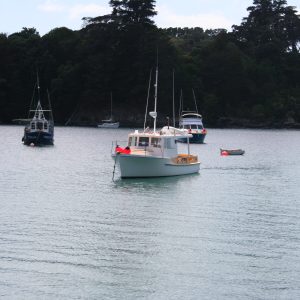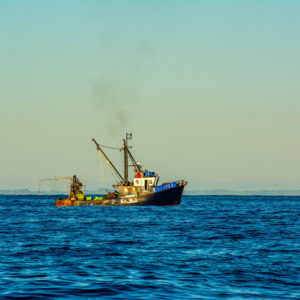LegaSea is celebrating the courage of Karl and Sarah Warr from Hawke’s Bay who have installed cameras on their trawler to livestream their fishing activity 24/7. This Napier couple wants the public to see for themselves how their fish is caught. They are hopeful that consumers will start asking their suppliers if the food they are buying is sustainably caught.

“The consumer dollar is extremely powerful in driving change at the production coalface,” says Karl.
Karl and Sarah involve their family in working hard to supply the best quality catch to the local market and further afield. As word gets out about their fish demand is growing. However, they are determined to stay focussed on developing their new trawl technique and delivering fresh catch, whatever species is caught each day.
Karl is the first to acknowledge that bottom trawling is an efficient way to catch fish although it is not selective. He wanted a way to safely release small fish while reducing his impact on the marine environment.
The primary innovation is a cage at the end of the trawl net which is designed to sort the small, unwanted fish from the marketable size fish. The cage allows small fish to easily escape at the same depth they entered the fishing gear. It also helps to improve the quality of fish that are retained.
“So, bringing fish to the surface then and deciding whether you want them or not is far less desirable than releasing them down in their habitat, to carry on and do their thing. Our innovation is around trying to maximise the selectivity of what we do. To be focused on just taking what we’re there to take, and doing the best job we can to release everything else as unharmed and in an undisturbed fashion as possible.”
Research results are startling. For the round shaped fish such as gurnard and red cod, the release rate for small fish is “well over 90%”. Elliptical shaped fish such as trevally and snapper the release rate of undersize fish is over 70%.
While development of this innovation has been expensive, time consuming and brain-racking, the rewards are many. He catches fewer fish for higher returns.
Costs are down because the gear is kept off the seabed, reducing damage to the natural habitat and less wear and tear on the gear. Because water can pass through the net and cage efficiently there are fuel savings and lower carbon emissions, adding to the environmental gains.
LegaSea is encouraging these innovations because they represent a successful model with environmental awareness and responsibility tagged into the origin of the fish.
It is what we envisage for the future of commercial fishing – low impact, high value fishing delivering top quality product to a discerning market.
“New Zealand is a small nation supplier; we need a point of difference. We can’t walk into the global marketplace because we’re big players, we’ve got to walk into the global marketplace because we’re special players. Innovation is key to getting that over the line.”
Nicely said Karl Warr. www.betterfish.co





